UK: Western Foxtail-lily Hawkmoth, RUS: Aeremurosovyi Brazhnik
Deilephila siehei Püngeler, 1903, Berl. ent. Z. 47: 235.Type locality: Bulghar Dagh [Bolkar Daglari, Toros Mountains, Turkey].
(Taxonomic note. (i) On the basis of genetic studies, the former 'subspecies' centralasiae (Staudinger, 1887), which occurs from northeastern Iran, southern Turkmenistan, mountainous eastern Uzbekistan, mountainous parts of southern Kazakhstan, Tajikistan and Kyrgyzstan to northern and eastern Afghanistan, northern Xinjiang Province, China, western Pakistan and Mongolia, is now regarded as a separate, distinct species (Hundsdörfer et al., 2009).
Taxonomic note. (ii) To complicate matters, what appear to be hybrids between Hyles siehei and Hyles euphorbiae conspicua (Rothschild & Jordan, 1903) have been found around Karaman, Turkey.)
[Further details on this species, as well as photos of all stages, can be found on Lepiforum.]
Holarctic; western Palaearctic region. Pleistocene refuge: Monocentric -- Pontomediterranean refuge.
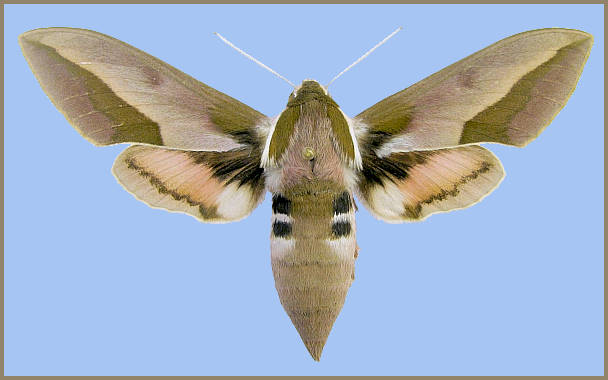
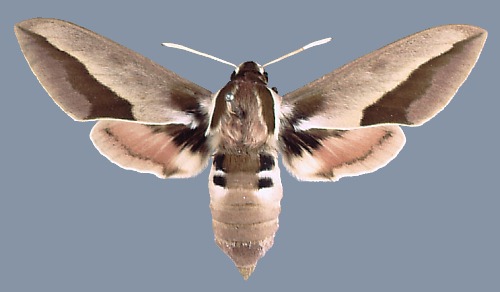
Wingspan: 65--70mm. Central gap in the oblique median stripe of forewing (very apparent in Hyles centralasiae) much reduced, or absent. Most also have a distinct rosy hue to both wings and body.
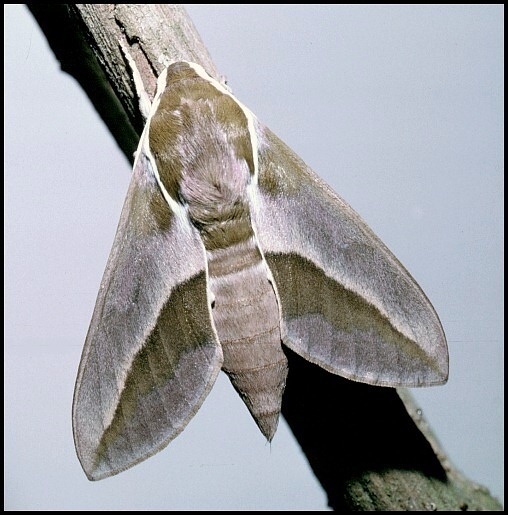
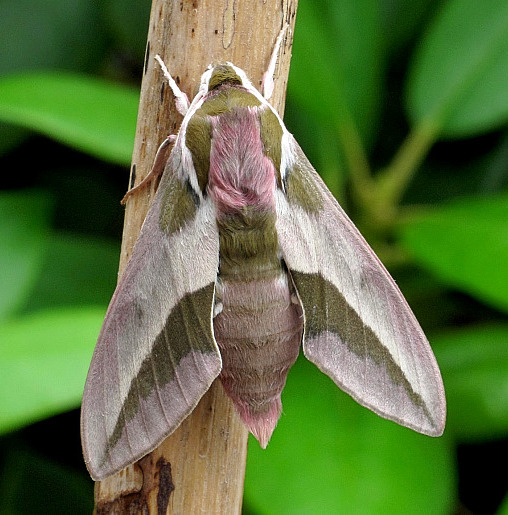
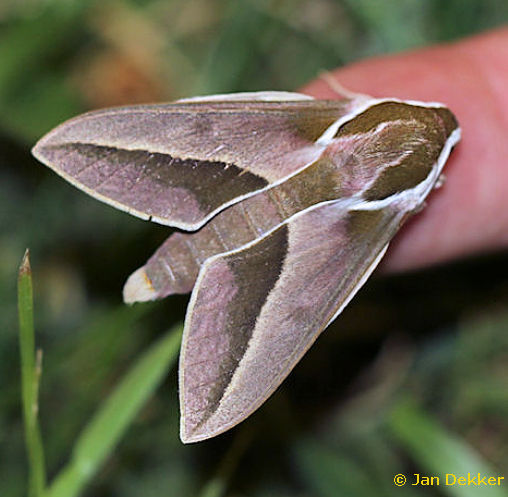
Apparently confined to the upper elevations of Anatolia, the eastern Toros and Bolkar Mountains in southern Turkey, and mountainous southeastern Turkey. Found in similar locations to Hyles centralasiae, i.e. rocky, herb-rich steppe.
Univoltine, so far as known; late May and June.
OVUM: Almost spherical, 1--1.3mm; blue-green when freshly laid, becoming yellowish as the larva inside develops. Laid indiscriminately on the seed- and flower-heads of the hostplant, with up to fifteen per plant. This stage lasts 5--6 days (Pelzer, 1982).
LARVA: Full-fed, 70--80mm. Polymorphic: brownish grey, off-white, greenish olive or black.
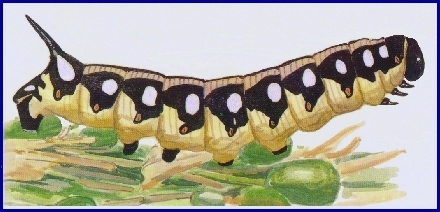
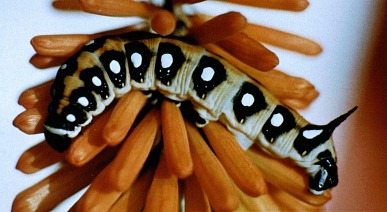
Early instars as Hyles centralasiae. In the final instar, most larvae are pale brownish grey with a rose dorsal suffusion. The very large, single, dorso-lateral eye-spots are brilliant white and heavily ringed with black. The spiracles are also white, but ringed with red. The white speckling and the ventro-lateral stripe are absent (Pelzer, 1982). In black larvae, the eye-spots may be very reduced or absent.
The larvae feed quite openly on the seed- and flower-heads of their hostplant, alternating bouts of frenzied feeding with spells of basking.
Occurs mainly during June and July, but with a few often appearing at the end of May.
Major Hostplants. The seed- and flowerheads of Asphodelus (Pelzer, 1982; Danner, Eitschberger & Surholt, 1998; De Freina, 2012; De Freina & Geck, 2014); the leaves are rarely eaten. Also Asphodeline. Both are in the Xanthorrhoeaceae/Asphodelaceae.
Minor Hostplants. The seed- and flower-heads of Eremurus, such as Eremurus himalaicus, Eremurus olgae, Eremurus robustus, Eremurus krudica and Eremurus stenophyllus (Danner, Eitschberger & Surholt, 1998). [In gardens and captivity this species will accept Kniphofia as a hostplant, as well as all cultivated forms of Eremurus.]
PUPA: 40--50mm. As Hyles euphorbiae (Linnaeus, 1758), but paler. Many spend several years in this stage.
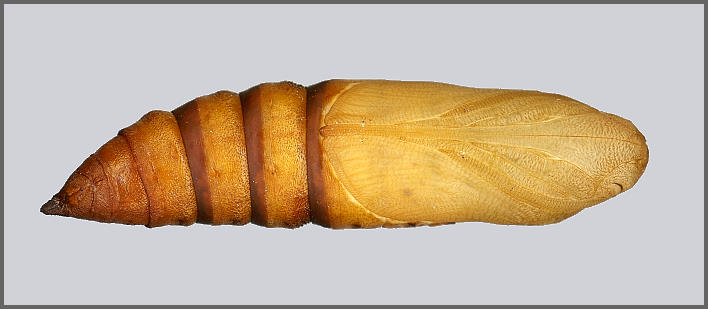
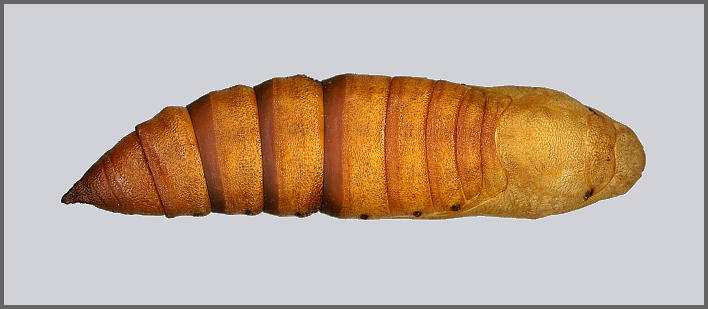
Tachinidae: Exorista segregata (Rondani, 1859) (Bartsch & Tschorsnig, 2010; Tschorsnig, 2017), Masicera sphingivora (Robineau-Desvoidy, 1830).
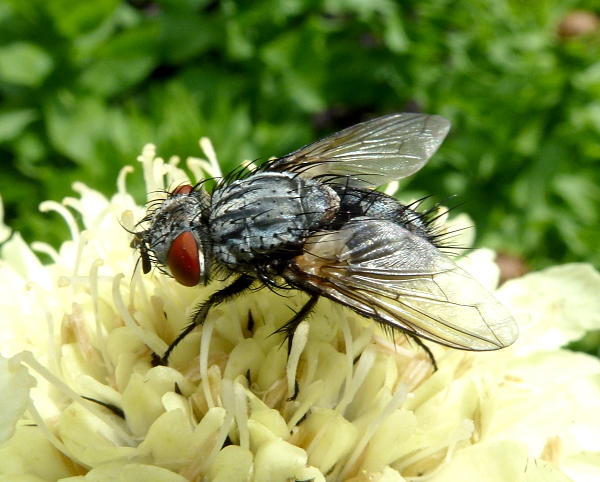
Confirmed from the eastern Toros and Bolkar Mountains of southern Turkey north to Ankara (Daniel, 1932; de Freina, 2012; Koçak & Kemal, 2018), and southeastern Turkey (Zaptal, Hakkari Province). It also occurs south along the Zagros Mountains of Iran to Kerman Province, from where one siehei-like specimen has been recorded (Zahiri, pers. comm. 2007). Records from Armenia (Danner, Eitschberger & Surholt, 1998), northern Syria, northern Iraq and northwestern Iran are suspect (De Freina & Geck, 2014).
Extra-limital range. None.
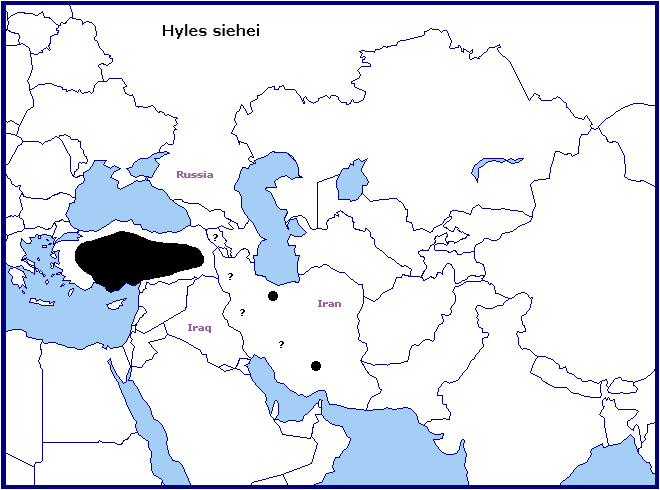
None.
 Return to species list
Return to species list